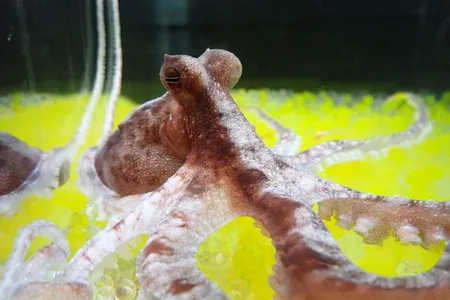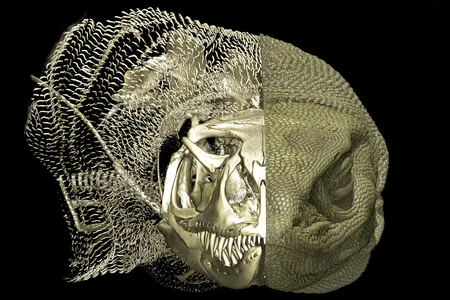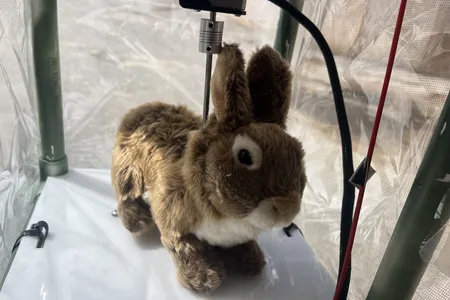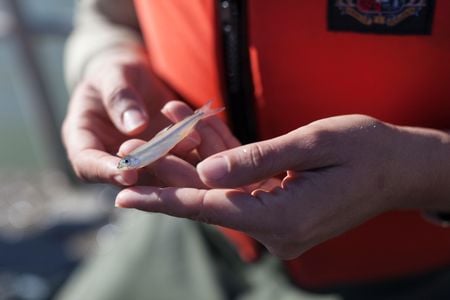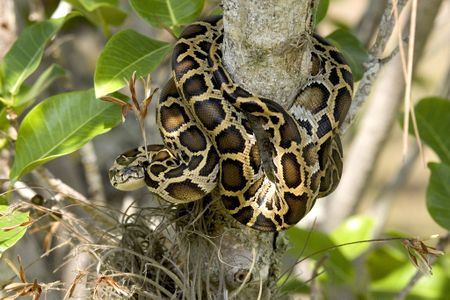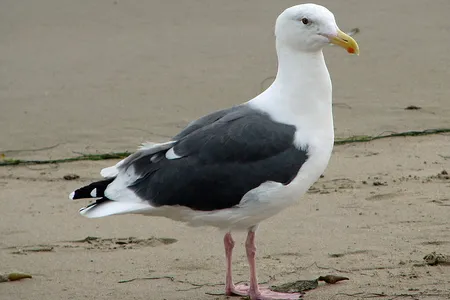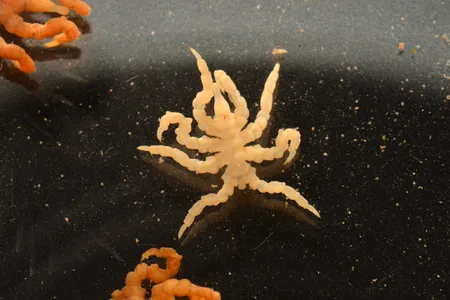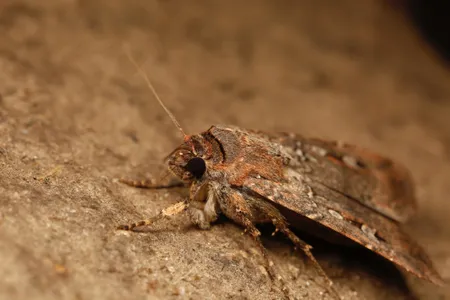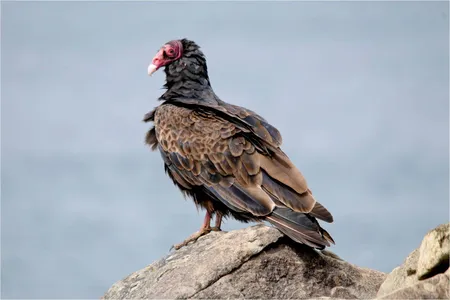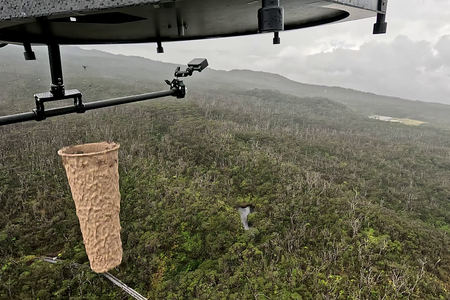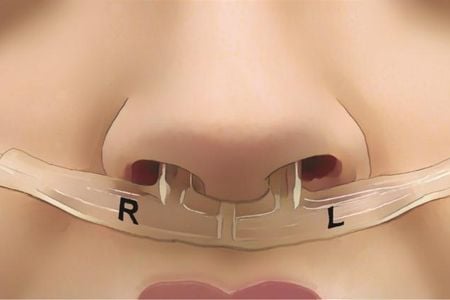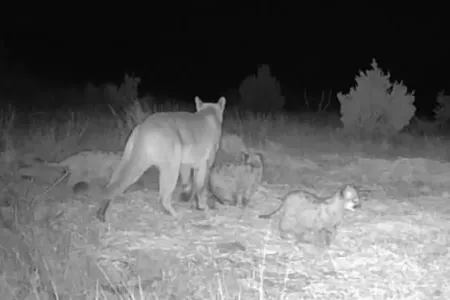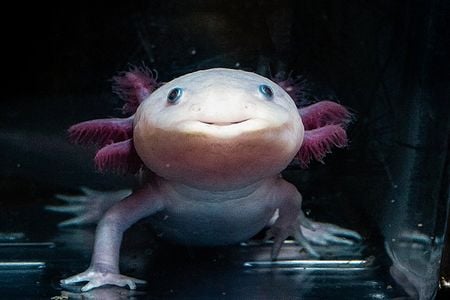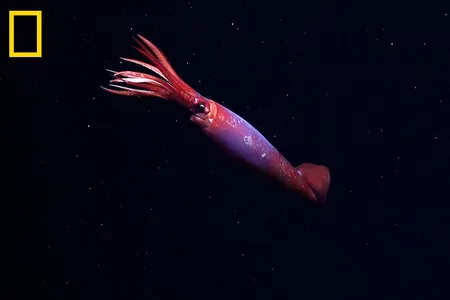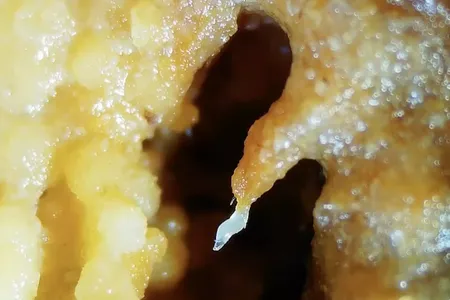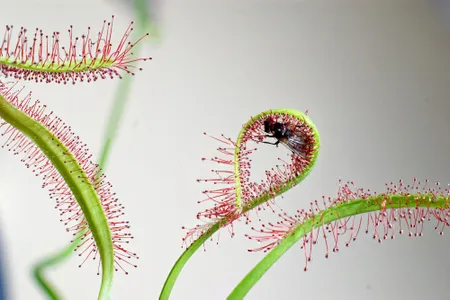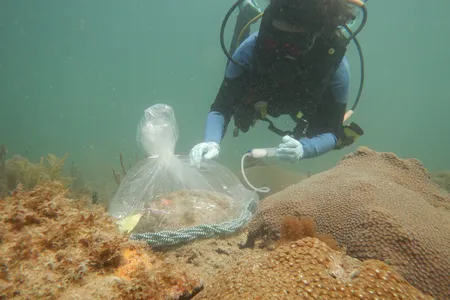Octopuses Fall for the Rubber Hand Illusion, Just Like Humans, Pointing to a Sense of Body Ownership
The trick that plays with awareness of one’s own limb appeared to fool all six of the cephalopods tested in a series of experiments
These Odd Bony Structures Were Hiding Beneath the Skin of Far More Lizards Than Thought, Researchers Find
Called osteoderms, the chain mail-like plates may have helped some species adapt to Australia’s harsh environment
‘Robo-Bunnies’ Are the Newest Weapon in the Fight Against Invasive Burmese Pythons in Florida
Scientists are experimenting with robotic rabbits in hopes of luring the destructive snakes out of hiding so they can be euthanized
A New Generation of Tiny Tracking Tags Offers a Fresh Look at the Lives of Little Fish
Researchers at the Department of Energy’s Pacific Northwest National Laboratory have developed a tag the size of a grain of rice that can also work underwater
Researchers Discover the Trick That Allows Burmese Pythons to Digest the Bones of Their Prey
Special intestinal cells collect excess minerals into particles the snakes can poop out, according to a new study
A California Gull Hitched a Ride on a Garbage Truck and Took an 80-Mile Journey to a Compost Facility. Then It Happened Again
GPS tracking data showed the bird zooming across bridges and interstates at 60 miles per hour on two occasions in 2018
These ‘Weird’ Sea Spiders Don’t Have Abdomens—and Instead Store Organs in Their Legs. With DNA, Scientists Are Learning Why
Researchers sequenced the knotty sea spider’s genome for the first time, revealing a missing gene that many other animals have
Something Strange Is Happening to Tomatoes Growing on the Galápagos Islands
Scientists say wild tomato plants on the archipelago’s western islands are experiencing “reverse evolution” and reverting back to ancestral traits
Scientists Are Just Beginning to Understand How Life Makes Clouds, and Their Discoveries May Drastically Improve Climate Science
Plants, plankton and sea spray all release elements that help the atmospheric blankets form
Iconic ‘Dragon Man’ Skull Offers First Glimpse of What a Denisovan’s Face Looked Like, New Genetic Studies Suggest
The mysterious ancient humans were only known from fossil fragments. Now, two papers argue a skull uncovered in China belongs to this group, after examining preserved DNA and proteins
Australian Moths Are the First Known Insects to Navigate by the Stars, Revealing a Migratory Superpower
Bogong moths use both Earth’s magnetic field and the starry night sky to make twice-yearly migrations spanning hundreds of miles, according to new research
Scavenger Animals Are in Trouble, and That Could Spell Bad News for Human Health
More than one-third of species that eat some amount of carrion are threatened or declining, a new analysis finds, and that could lead to a rise in zoonotic diseases
Scientists Are Using Drones to Unleash Thousands of Mosquitoes in Hawaii in a Bid to Save Native Birds. Here’s How It Works
The lab-raised, non-biting male mosquitoes are meant to breed with the invasive ones on the islands and produce sterile eggs that will help suppress avian malaria
The Way You Breathe Is Unique to You, Like a Fingerprint, New Study Suggests
Researchers could identify people with almost 97 percent accuracy based on 24 hours of their recorded breathing patterns, and they also found links to a person’s mental and physical condition
Rare Mountain Lion Kittens Spotted on Trail Cameras Suggest the Big Cats May Be Re-establishing a Population in Oklahoma
Two separate adult mountain lions were recorded with cubs in different parts of the state last year, offering the first evidence confirmed by state biologists that the cats could be breeding there
Axolotls May Hold the Key to Regrowing Limbs, and Scientists Are Unraveling Their Secrets to Help Humans Do the Same
With the help of gene-edited axolotls, researchers have gotten one step closer to enabling human limb regeneration
Scientists Had Never Seen This Mysterious Squid Alive in the Wild—Until Now. See the First Footage of the Elusive Creature
A three-foot-long Antarctic gonate squid was spotted swimming 7,000 feet below the surface of the Southern Ocean
Researchers Discover That Living Worm Towers Exist in Nature, Not Just in Horror Movies
A new study reveals that nematodes assemble into coordinated structures to catch a ride on passersby
Carnivorous Plants Have Been Trapping Animals for Millions of Years. So Why Have They Never Grown Larger?
Plants that feed on meat and animal droppings have evolved at least ten times through evolutionary history
A Deadly Disease Is Eating Away at Caribbean Corals and Wreaking Havoc on Reefs. Could Probiotics Be the Solution?
New research suggests the probiotic McH1-7 could help stop the spread of stony coral tissue loss disease among wild corals near Fort Lauderdale, Florida
Page 1 of 93
